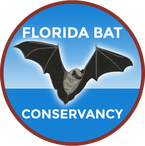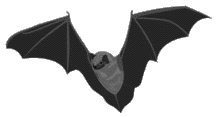Southeastern myotis
Description: The fur of the southeastern myotis varies in color from brown to gray, to brownish-orange. The individual hairs are bicolored with the lower portion being darker than the tips.
Wingspan: 9-11 inches
Body length: 1.9-2.1 inches
Weight: 0.2-0.3 ounces
Florida roosting preferences: Colonial. The southeastern myotis is primarily a cave dwelling species, but also roosts in hollow trees, buildings, bridges, culverts and bat houses.
Food preferences: Insectivorous. Mosquitoes make up a significant portion of the diet of the southeastern myotis, but they also fed on moths, beetles, crane flies and other insects. They typically forage over ponds, streams, lakes and rivers near the waters surface.
Reproduction: Females usually give birth to two pups during the month of May. This is unusual, since most myotis species give birth to only one pup.
Florida status: Common in north Florida and the Florida panhandle. Uncommon in the central and northeastern portions of the state.
Florida range: Found in north and central Florida, but not south Florida or the Florida Keys.
Copyright Florida Bat Center 2005
Wingspan: 9-11 inches
Body length: 1.9-2.1 inches
Weight: 0.2-0.3 ounces
Florida roosting preferences: Colonial. The southeastern myotis is primarily a cave dwelling species, but also roosts in hollow trees, buildings, bridges, culverts and bat houses.
Food preferences: Insectivorous. Mosquitoes make up a significant portion of the diet of the southeastern myotis, but they also fed on moths, beetles, crane flies and other insects. They typically forage over ponds, streams, lakes and rivers near the waters surface.
Reproduction: Females usually give birth to two pups during the month of May. This is unusual, since most myotis species give birth to only one pup.
Florida status: Common in north Florida and the Florida panhandle. Uncommon in the central and northeastern portions of the state.
Florida range: Found in north and central Florida, but not south Florida or the Florida Keys.
Copyright Florida Bat Center 2005
© Copyright 2020 Florida Bat Conservancy

